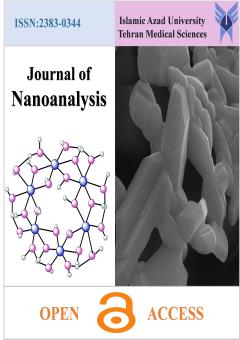-
-
List of Articles
-
Open Access Article
1 - Response surface methodology analysis of the photocatalytic removal of Methylene Blue using a new Cu(II)-MOF
Zahra Mohseni nik Majid Ramezani Saeed Jamehbozorgi Tahere Momeni Esfahani -
Open Access Article
2 - Green synthesis and antibacterial application of silver nanoparticles using Oak Peel extract
Nooshin Japalaghi Nahid Ghasemi Majid Ramezani Behrooz Shojaei saadi -
Open Access Article
3 - Preparation of antibacterial nanocomposite cotton fabrics with in situ generated silver and silver oxide nanoparticles by bioreduction using Moringa oliefiera leaf extract
Umamahesh Mallavarapu -
Open Access Article
4 - SYNTHESIS, CHARACTERIZATION AND APPLICATION OF Ni /SiO2 HETEROGENEOUS NANO CATALYST IN OPTIMIZATION OF METHYL ESTER FROM Khaya senegalensis SEED OIL
Mela Yoro Wilson Lamayi Nasiru Pindiga Zaccheus Shehu -
Open Access Article
5 - Utility of Gold Nanoparticles for Spectrofluorimetric and Spectrophotometric Determination of Ceftobiprole in Dosage form and Biological Fluids
Hesham Salem Mahmoud Omar Dina Zein Deena Mokhater -
Open Access Article
6 - Survey and Evaluation of Hardystonite Nanostructure (HTN) Bioactivity in Biomedical Engineering
hassan GHEISARI -
Open Access Article
7 - Green Synthesis and Characterization of Bimetallic (Ag-Cu) Nanoparticles from Leaf extract of Celtis integrifolia (Hackberry) and it’s Antimicrobial Activity
Nasiru Yahaya Wilson Lamayi Sulaiman Muhahammad -
Open Access Article
8 - A novel soft polycaprolactone-alginate nanofiber plasma-modified with sufficient cell attachment for tissue engineering
Elham Azizifard َAzadeh Asefnejad Sedigheh Joughehdoust Hadi Baharifar
-
The rights to this website are owned by the Raimag Press Management System.
Copyright © 2021-2025







